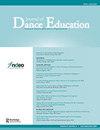Dance/Movement Therapy for Infants and Young Children with Medical Illness: Treating Somatic and Psychic Distress
Q1 Arts and Humanities
引用次数: 0
Abstract
Tortora and Keren clearly love very young children. Throughout their book, Dance/Movement Therapy for Infants and Young Children with Medical Illness: Treating Somatic and Psychic Distress, they demonstrate intuitive knowledge of the child’s experience without forfeiting scientific information. They understand and respect the feelings and perspectives of the child and also demonstrate empathy for the quandaries and behaviors of parents who are traumatized by the suffering of their infants and toddlers. The underlying current of their success is how they communicate both non-verbally and verbally in their process. Tortora and Keren challenge medically held notions that young children don’t remember the pain of early childhood. It is becoming increasingly clear that the brain, mind, and body remember psychologically and physically traumatic events, consciously or not. Lifelong behaviors may therefore be greatly affected by early painful experiences, especially those in which pain is repeated such as in medical treatments for childhood diseases or surgery. Each of the 12 chapters focuses on a case study of the therapeutic principles reported. Dance/Movement Therapy sessions with fourteen children, ages prenatal to four, are described with compassion for the infants, toddlers, preschoolers, parents, and medical caretakers. Sessions are private, but there are indications of group gatherings, not described. Studies present not only a “how to,” but a “why to” with examples that depict both simultaneously. Primarily, chapters have a common structure: presentation of a case study, clinical discussion of the situation, introduction to the chapter content, breakdown of content, and conclusion. The final chapter summarizes key points; four appendices provide details about DANCE and MSDMT (see below). The Dance/Movement Therapy (DMT) tools described in the book include more than dance. Sessions involve play with objects, music, rhythms, songs, and play-acting. The focus of the techniques is to initially sense the infant/child’s present traumatized behaviors, discretely establish nonverbal communication without intrusion or obstruction, and layer an individual approach to gradually relate more directly and calm the situation. Tortora has developed a structured approach called Dyadic Attachment-Based Nonverbal Communicative Expressions—DANCE. This is a fully developed Multi-Sensory Dance Movement Therapy (MSDMT). There is one difficult aspect of the book for a dance artist such as myself. Perhaps it is customary in scientific/medical circles, but the number of acronyms is dizzying, so I constructed a reference list to help. In the authors’ favor, they repeat their meanings occasionally and title chapters using full names. Drs. Tortora and Keren both write from strong professional biographies with years of experience and recognition for their work. Tortora holds an EdD and is a board-certified Dance/Movement Therapist specializing in the field of infant mental health and development. She has private dance/movement practices in New York City and Cold Spring, NY, and is a Senior Dance/Movement Therapist at Integrative Medicine Service Memorial Sloan Kettering Cancer Center in New York City, where much of the work in this book occurs. Her first book, The Dancing Dialogue, sets the developmental and therapeutic stage for the present publication. Her work is highly respected by the American Dance Therapy Association where she is invited to regularly present. She has also presented at NDEO conferences. Keren holds an MD, is a child and adolescent psychiatrist and a clinical research consultant at the Early Childhood Outpatient Clinic, and is a Clinical Professor Emeritus of Tel Aviv University. She is the former president of the World Association for Infant Mental Health and Chair of the World Psychiatric Association Prenatal Section. In 2013 she was chosen to join the task force to review the Diagnostic Classification of Mental Health and Developmental Disorders of Infancy and Early Childhood, Revised Edition DC 0–3 R (Zero to Three, 2005). Reading this book, I reflected on behaviors of some of the young children I taught; I have intuitively used some of the techniques described. The clearly defined layering and progression of tools provides a helpful structure that can engage a class of preschool children. The case studies focus on tools and techniques for dance therapy in hospital environments, but to be realistic, how many infants and children do not carry traumatic events in their bodies? Tortora’s approach, DANCE, is helpful for multiple dance education situations, and potentially a method for the educators, themselves, to gain self-awareness.为患有内科疾病的婴幼儿提供舞蹈/运动疗法:治疗躯体和心理压力
托托拉和凯伦显然非常喜欢幼儿。在他们的《婴幼儿内科疾病的舞蹈/运动疗法》一书中:治疗躯体和精神压力》一书中,他们展示了对儿童体验的直观认识,同时又不放弃科学信息。他们理解并尊重儿童的感受和观点,也对因婴幼儿的痛苦而受到创伤的父母的窘境和行为表示同情。他们成功的根本在于他们在治疗过程中如何进行非语言和语言沟通。托托拉和凯伦挑战了医学上认为幼儿不会记得幼年痛苦的观点。人们越来越清楚地认识到,大脑、心灵和身体会有意无意地记住心理和生理上的创伤事件。因此,早期的痛苦经历可能会极大地影响人的终生行为,尤其是那些反复出现痛苦的经历,比如在治疗儿童疾病或手术时。本书共 12 章,每章都以一个案例研究为重点,介绍了相关的治疗原则。书中描述了对十四名婴儿、幼儿、学龄前儿童、父母和医疗护理人员的舞蹈/运动疗法治疗,这些儿童的年龄从出生前到四岁不等。课程是私下进行的,但有迹象表明进行过集体聚会,但未作描述。研究不仅介绍了 "如何做",还介绍了 "为什么做",并同时举例说明。各章主要有一个共同的结构:介绍一个案例研究、对情况进行临床讨论、介绍本章内容、细分内容和结论。最后一章总结要点;四个附录提供了有关舞蹈和 MSDMT 的详细信息(见下文)。书中介绍的舞蹈/运动疗法(DMT)工具不仅仅包括舞蹈。治疗过程包括与物体、音乐、节奏、歌曲和表演游戏。这些技巧的重点是初步感知婴幼儿目前的创伤行为,在不打扰或不妨碍的情况下谨慎地建立非语言交流,并采用个性化的方法,逐渐与婴幼儿建立更直接的联系,平息事态。托托拉开发了一种结构化的方法,名为 "基于二元情感的非语言沟通表达--DANCE"。这是一种全面发展的多感官舞蹈运动疗法(MSDMT)。对于像我这样的舞蹈艺术家来说,这本书有一个难点。也许这是科学/医学界的惯例,但缩略语的数量令人眼花缭乱,因此我列出了一份参考清单,以提供帮助。对作者有利的是,他们偶尔会重复这些缩略词的含义,并用全名来命名章节。托托拉博士和凯伦博士都拥有丰富的专业履历和多年的工作经验,他们的工作也得到了认可。托尔托拉拥有教育学博士学位,是经委员会认证的舞蹈/运动治疗师,专攻婴儿心理健康和发展领域。她在纽约市和纽约州冷泉市拥有私人舞蹈/运动诊所,并且是纽约市斯隆-凯特琳癌症纪念中心综合医学服务部的高级舞蹈/运动治疗师,本书中的许多工作都是在该中心进行的。她的第一本书《舞蹈对话》为本书的出版奠定了发展和治疗基础。她的工作受到美国舞蹈治疗协会的高度尊重,她经常受邀在该协会发表演讲。她还曾在 NDEO 会议上发表演讲。凯伦拥有医学博士学位,是儿童和青少年精神病学家,也是幼儿门诊部的临床研究顾问,同时还是特拉维夫大学的名誉临床教授。她曾任世界婴儿心理健康协会主席和世界精神病学协会产前分会主席。2013 年,她被选为《婴幼儿心理健康和发育障碍诊断分类》(修订版 DC 0-3 R)(Zero to Three,2005 年)的评审工作组成员。读完这本书,我对自己教过的一些幼儿的行为进行了反思;我直观地使用了书中描述的一些技巧。书中明确界定了各种工具的层次和进展,提供了一个有用的结构,可以吸引一班学龄前儿童。案例研究的重点是在医院环境中进行舞蹈治疗的工具和技巧,但实事求是地说,有多少婴幼儿和儿童的身体里不带有创伤事件呢?托尔托拉的 "DANCE "方法对多种舞蹈教育情境都有帮助,也可能是教育者自身获得自我意识的一种方法。
本文章由计算机程序翻译,如有差异,请以英文原文为准。
求助全文
约1分钟内获得全文
求助全文
来源期刊

Journal of Dance Education
Arts and Humanities-Visual Arts and Performing Arts
CiteScore
1.80
自引率
0.00%
发文量
47
 求助内容:
求助内容: 应助结果提醒方式:
应助结果提醒方式:


